Text
Reflection and summary
I chose nine of the test photos as my final work, seven of which I thought would show women's lives under gender stereotypes, reflecting the gender stereotypes women encounter at different ages: First of all the two photos about the dolls are my way of expressing that many of the children's preferences are not actually their own preferences, but are imposed by the outside world, so I photographed them in the mirror, not the dolls themselves. The third photo of the book and ruler is to express that because of the stereotype think women are more suited to studying arts subjects, there may be girls with a love and talent for science will be less and less confident by this stereotype. The next two are about the inequalities in pay and promotion that women experience in the workplace, and the last two are about the inequalities in the distribution of household chores.

And the remaining two, one of which I wanted to show the idea that men and women should be equal, and the other to show that both men and women may have some inner thoughts and preferences that are contrary to the perceived gender identity which gender stereotype think them should be.
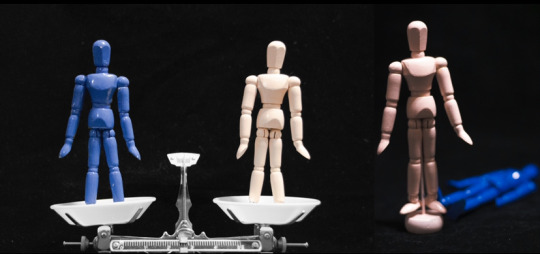
I chose these photos because I thought they would express my thoughts better and look slightly better.Because I think there are still a lot of shortcomings in the preparation and shooting, first of all, I have too many ideas, but I don't know how to express them, so the photos don't convey the ideas very well, probably because I have seen and studied too few photos. The second is that I think because I was so concerned with expressing the ideas I wanted to convey, the photos themselves didn't look good, the composition and colours weren't particularly good. The third is also because I didn't know how to express my ideas in the photos, which also left some ideas untried
But apart from these shortcomings, I think I have learnt a lot from this shoot, firstly, I have learnt a lot about the dangers of gender stereotypes, which I didn't realise were so harmful until now. And I was able to show these harms through my own photos, which made me feel like I was doing something to help eliminate gender stereotypes. Secondly, I had never thought about planning an exhibition before, but through this semester I have gained some ideas and understanding of how to plan an exhibition. In the future, I will watch more works to enrich my experience and ideas, and I will do more prep and allow enough time to choose my photos.
I would like to conclude by saying that gender bias and stereotypes are not only harmful to women but to all people, so I hope that more people will take this issue seriously for the sake of others and themselves, and start to eliminate gender bias from ourselves.
0 notes
Text
Plan of exhibition
The choice of venue for the exhibition I think should be straight, as it will allow the viewer to see all the photographs in one way and Photographs will be exhibited in order of age from left to right but audience can also visit from right to left when visiting. This order is because I want the audience to feel that this is what women suffer from growing up with gender stereotypes.
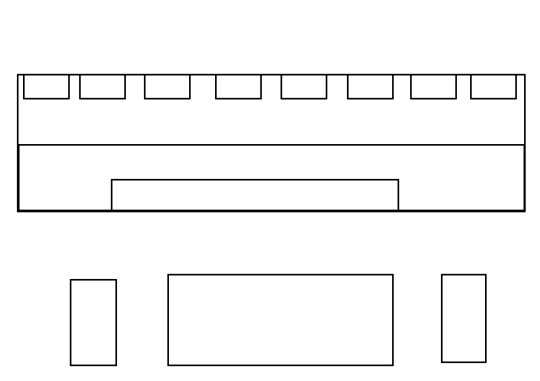
And for the colour and space
1. I wanted to divide the exhibition space into two parts, one to hang the photographs and one for the audience to sit and enjoy.
2.For the section where the photographs are displayed I want to paint the background pink, as this is the section that shows the gender stereotypes that women suffer from
3, where the viewers sit, I wanted to paint it blue because I want to express that when the viewers look at this issue, they can think about it from a different gender perspective
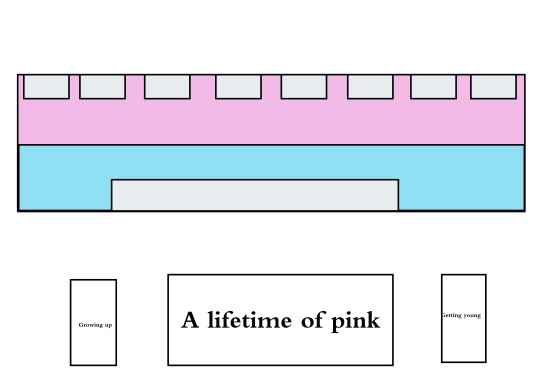
0 notes
Text
Stories about wooden figurines and explain shot idea
The blue and pink figures that I used to represent the male and female in the picture are actually colours that I sprayed on myself.
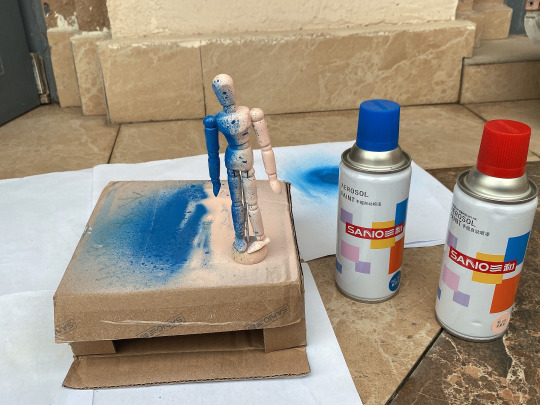
I thought for a long time about how to express the male and female in the object, because actually using pink and blue is a gender stereotype, so I initially sprayed half pink and half blue on a wooden figurine to represent the gender, but then I realised that there were limitations to the idea that I could use the wooden figurine for the photograph.
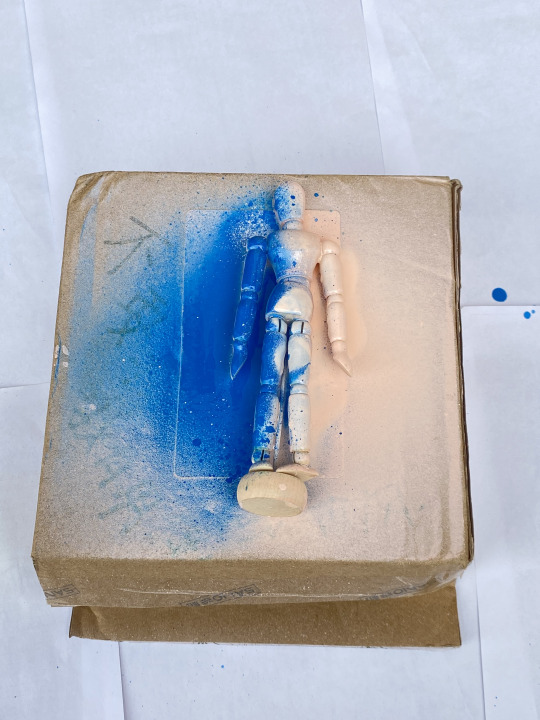
So I ended up using the blue figure for the male and the pink figure for the female, and although I know that this symbolism is actually a gender stereotype, it also allows me to ask the viewer if they can see that the pink wooden figure is for the female and the blue wooden figure is for the male when they look at my photos. If so, it proves that the viewer is also influenced by gender stereotypes, including myself of course.
The last part of the photo is my attempt to demonstrate the idea that men and women should be equal and that gender stereotypes are actually harmful to all genders.

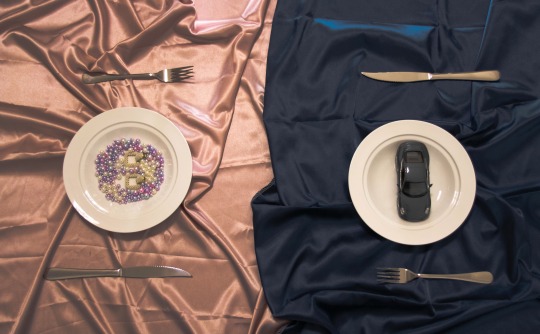
The blue figurine in this below photo I wanted to express the shadow, the fact that both women and men should live their lives as they see fit in their hearts, and that blue and pink are not really representative colours for men and women, and that here it can be understood that the female psyche may have so-called masculine traits and vice versa.
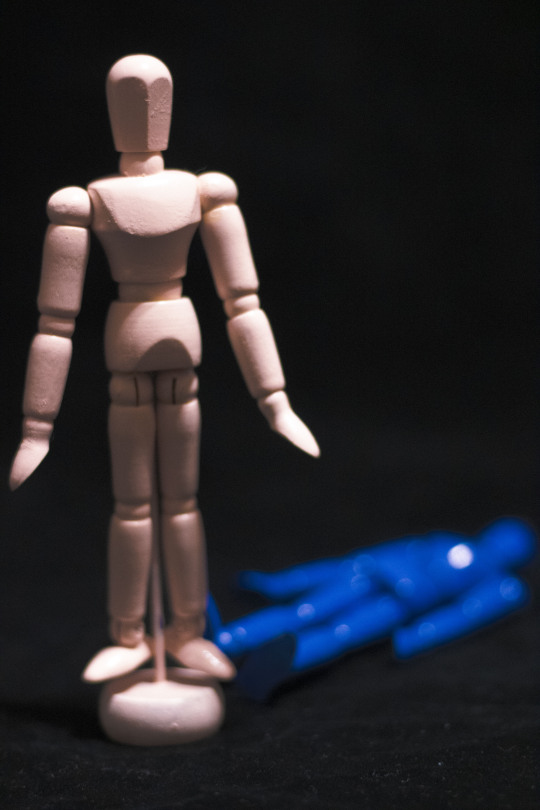
0 notes
Text
explain the idea of shot---Part 2
Gender stereotypes at workplace
While the government has worked hard in recent years on initiatives to eliminate gender pay gaps, it is also clear from the data that the gender gap in hourly pay has narrowed according to HMRC data published in 2020. This is due to more women being promoted or recruited to higher ranks.
The average gender pay gap for full-time employees was 1.2%, a decrease of 0.7% from 2019. The average gender pay gap for part-time employees was 9%, a decrease of 4.6% from 2019. The median gender pay gap was 2.9% for full-time employees and 15.3% for part-time employees. This represents an overall positive decrease of 0.4% and 3.5% respectively compared to 2019.
However, while women's pay packages and the employment environment are getting better year on year, the gap between men's and women's pay still exists.
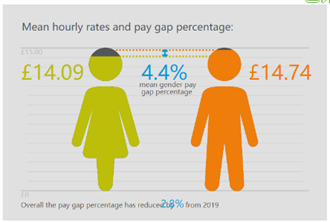
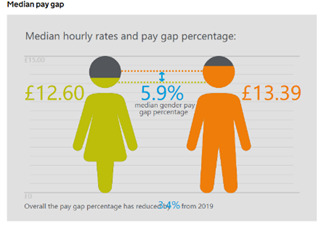
To convey this phenomenon, I took the following photograph.
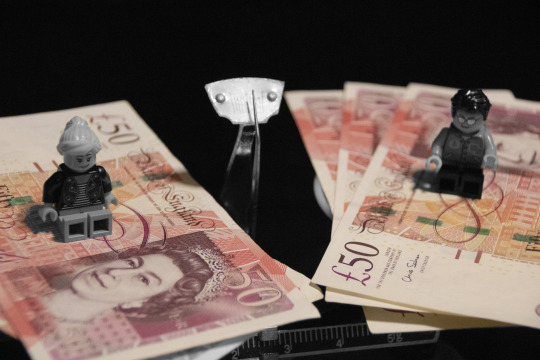
I have placed money and two Lego figures on each side of the scale, but on the male Lego side I have placed three sheets of £50 and on the female Lego side I have placed only two sheets, but the scale shows that the weight is the same on both sides, and I wanted to satirise the bias that it is normal for women to be paid less than men in the face of gender stereotypes. I only kept the colour of the money because I wanted to highlight the fact that this photo is about the issue of salary.
The photo below is my illustration of the 'glass ceiling', which refers to the fact that women find it difficult to rise to leadership positions in the workplace because they are prevented from doing so by an invisible gender bias.
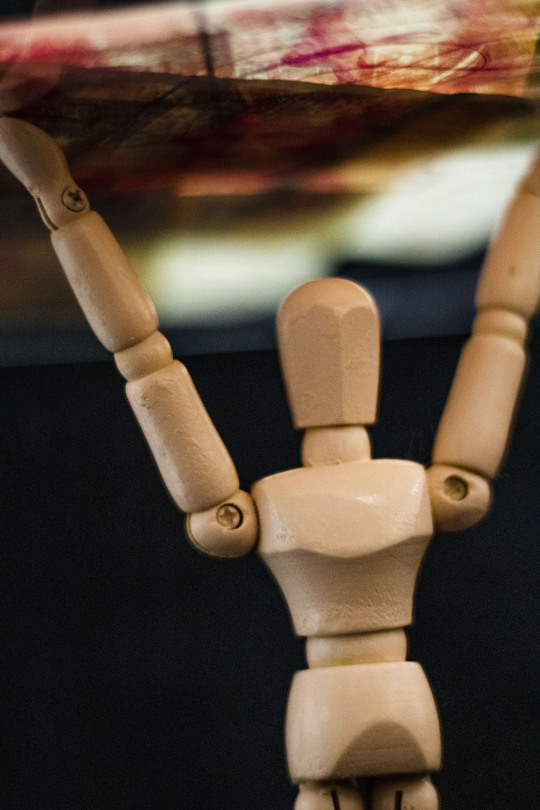
In this photo I have placed a plastic plate on top of the pink figure to act as a glass and placed money on top of the glass, but the pink figure cannot touch the money to represent the 'glass ceiling' that women experience in the workplace.
Gender stereotypes in the family
The first one was taken in the washing machine, but the camera only focused on the little blue person sitting outside the washing machine, while the little pink person sitting in the darkness was not focused on at all. What I am trying to show here is that because of the traditional gender stereotype that women take care of the home and men earn money outside, many women are not valued and that housewives have to do a lot of housework every day and they do the same job day in and day out without being seen, just like in my photo, where women sit in the darkness without being seen.
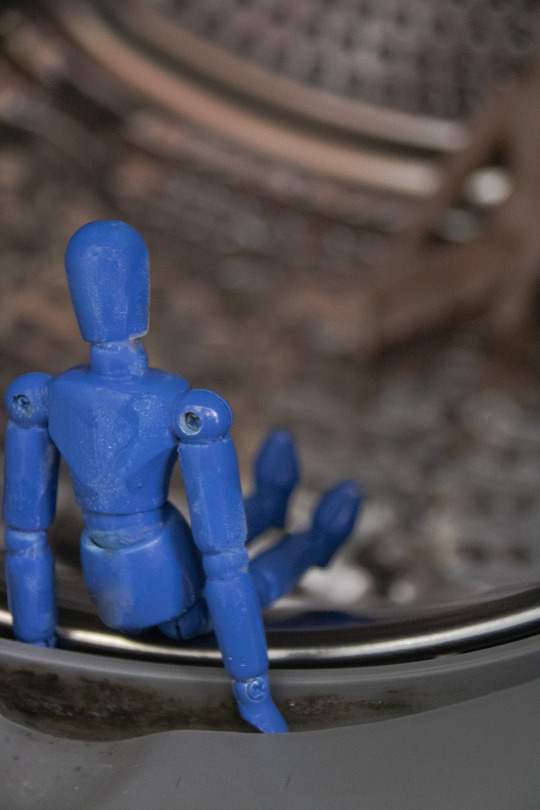
The other one has a similar meaning, with the blue figure sitting on a pile of clothes and looking at the pink figure, and here I am also trying to suggest the phenomenon that some men do not do the housework, leaving the women to do all the housework , and I have used a low-angle angle here to bring out the position of the blue figure.

Link:https://www.gov.uk/government/publications/hmrc-and-valuation-office-agency-gender-pay-gap-report-and-data-2020/hmrc-gender-pay-gap-report-and-data-2020
0 notes
Text
A research on gender stereotypes in the workplace
Because I wanted to show the damage that gender stereotypes can cause in all age groups, I did a little research on the issue of gender stereotypes in the workplace.
According to the data, women hold only 3% of the Fortune 500 CEO seats, only 15.2% of F500 board seats and only 15.7% of F500 corporate officer positions (Catalyst, 2009). The figures are not much better on the political front. Women currently hold only 90 of the 535 seats in the US Congress (16.8%). This constraint on women's advancement in the workplace is referred to by Hymowitz and Schellhardt as the glass ceiling, suggesting that these barriers to women's advancement are invisible barriers because they are created because they are women.
According to research, leadership is often associated with masculine traits, but really good leadership actually requires a combination of feminine and masculine traits, including (but not limited to) intelligence, emotional intelligence, risk-taking, empathy, self-confidence, openness to experience, extroversion, conscientiousness, integrity and trustworthiness, as well as the ability to persuade, motivate and inspire others (Eagly & Carli, 2007; Judge, Bono, Ilies, & Gerhardt, 2002). Although research has shown that there may be some subtle differences between men and women at work, such as men being more assertive and women being more attentive, these differences are respective strengths and not differences between men and women.
And because of the traditional division of labour, women are more likely than men to take on the responsibilities of the family. As women have full-time jobs, they also take on more responsibility for child-rearing and domestic work. According to the study, more women (71%) than men (54%) among married parents who work full time spend more time caring for their children, they spend more time caring for their children, women: 1.2 hours a day; men: 0.8 hours⁄day; and with regard to housekeeping, women spend an average of 2.1 hours per day compared to 1.4 hours per day for men. As women take on a disproportionate amount of responsibility for household chores, they create greater conflict between work and family. This conflict is even more pronounced when people have children: women with children are more likely to be unemployed or to work fewer hours than women without children, while men show the opposite pattern. And in order to balance family and work, women with children take more time off work, swap full-time jobs for part-time ones and quit their jobs to become housewives (I don't mean to say here that housewives are bad, they are very hard, I'm just analysing the problems women have in the workplace). And these can lead to women having less work experience than men, thus creating a leadership gap.
Therefore, foremost among the barriers faced by female leaders are the stereotypes, prejudices and discrimination faced by these 'stigmatised' individuals. In the context of leadership, women are perceived as being stigmatised because their characteristics indicate a lower status and power and lead others to devalue them.
So chief among the obstacles facing women leaders are these stereotypes, prejudices and discrimination brought about by gender stereotypes.
0 notes
Text
explain the idea of shot---Part 1
I wanted to show the discrimination that women in different grades can face, so my test photo was also taken according to age
Firstly, Gender stereotypes about young girl
What I wanted to show in this photograph was gender stereotyping at an early age, and according to the literature I reviewed, some of the toys that girls often played with, such as Lego and Barbie toys for girls were mainly pink, and the pink Power Rangers were the only females in this popular children's show. Other than this, adverts for toys that girls play with are usually pink as well as purple, both of which are only used for shots of toys geared towards girls' use.
It was for this reason that I pondered that although surveys show that the vast majority of girls like pink or warm colours and like to play with Barbie, would so many girls really like to play with pink everything if it was entirely up to them, without an ounce of gender stereotyping from the outside world?
So I put the pink Barbie behind a pink rope shaped like a prison, a motif that comes from a game called rope flipping that Chinese girls used to play as children, and I wanted to show that little girls are confined to the stereotype that they can only play with dolls. As I am Chinese, I have used the traditional Chinese game of rope flipping here as it is seen as a game for girls only and boys who play it are often called sissies.

As I wasn't very happy with this photo, I took other ones based on this idea. In these two pictures I only photographed the doll in the mirror and not the doll itself. Because I wanted to show that many of the preferences of children are only what the people around them want them to look like and not what they like, and the use of the mirror here is that I wanted to portray this as the adults would like to see it.
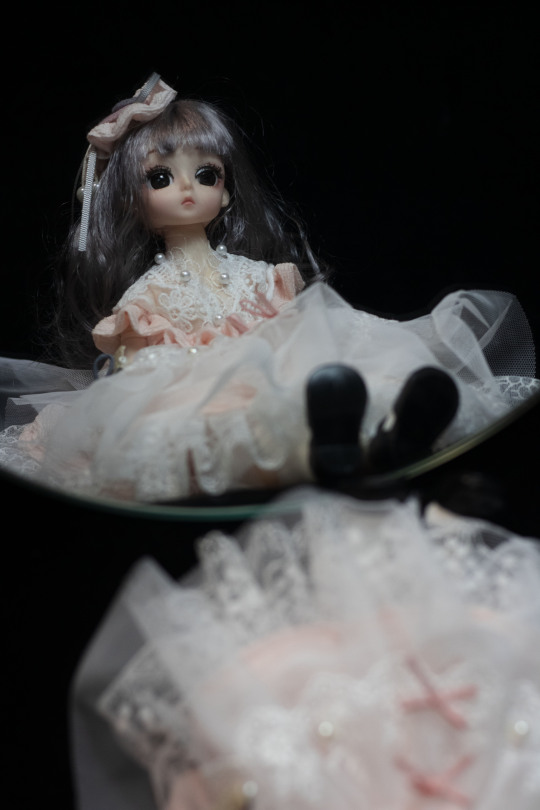

Gender stereotypes about students
As they get older, little girl reaches school age, so below I will demonstrate the impact of stereotypes on students.
As I described at the beginning of my first post, women are generally considered to have an advantage in arts subjects, but the difference is not apparent when men and women are asked to complete the same science exam.
So, for this age group my test photos are all about the girls' love of science and the fact that their talents are likely to be buried by stereotypes.
First, I asked my friend to model for me in these photos. Here I am actually trying to imitate the same scene as in the movie Lolita where Lolita is lying on her back on the fountain in the grass, but here the book my friend read is about mathematics.
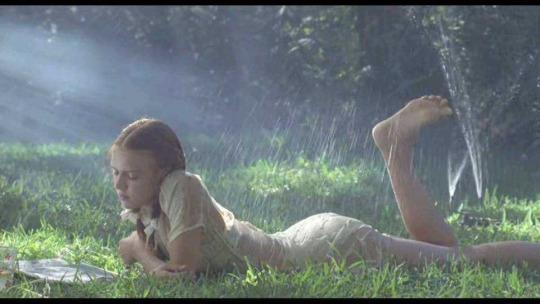
( From Lolita)


But then I realised that when there was a model in the picture the viewer's first reaction might be more on the person than on the maths book and ruler I wanted to show, and as none of my other pictures had a real person in them, I took a few other pictures with just a still life.
In these photos I have placed the ruler in a literature book to convey that because of the outside perception that women are better suited to the arts, it leads many women to start school with a lack of confidence in the science subjects and over time give up their love for them.

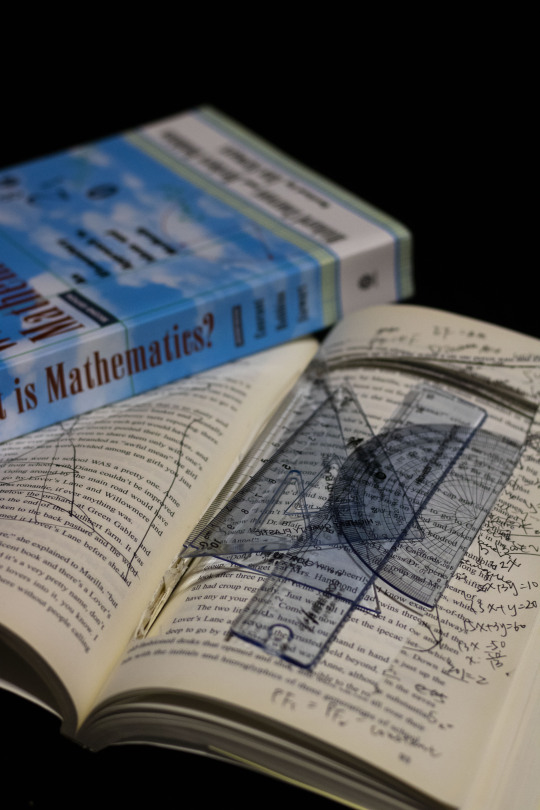
0 notes
Text
Research about photography techniques
Camera Angle: can suggest the relationship between audience and photo
Then explain what these different camera angles can do and what they mean.
Low - Establishes the power of the character or object.
Eye level - Gives the audience a personal contact with the character.
High - presents the subject as vulnerable or lacking in power.
Worm’s eye - presents a very large and/or powerful image
Canted (also known as Dutch angle) - Develops psychological unease or tension.
Bird's Eye - Often used to establish a shot and character relationship.

In addition to camera angles, I also checked out some information on photographic lightings
Front lighting- or placing the subject directly in front of a person or object, can highlight details
Side-lighting- or placing the light source or subject on its side so that the light comes from the side, counteracts the dullness of frontal lighting by creating shadows and depth. When shooting with side lighting, be aware of where the shadows fall - small adjustments to the position of the subject can create more interesting or flattering shadows.
Backlighting,-backlighting can create spectacular images.
Hard light sources produce shadows with minimal transitions between light and dark areas of an image. Although hard lighting refers to the transition between light and dark, rather than how deep the shadows are, hard lighting is often (but not always) associated with creating deeper, darker shadows. The downside is that if used incorrectly, it can create dark shadows under the eyes in a portrait. However, hard light tends to create more contrast in an image.
soft light has a more subtle transition between light and dark areas of the image. When shooting portraits, hard light tends to emphasise skin imperfections, while soft light tends to hide them better.
Close light sources are softer, while distant light sources create that harsher transition between light and dark and the sun is a large light source
0 notes
Text
Idea about my project
The subject of my photo is about gender stereotypes.
While searching for information I came across an experiment conducted by Coffman on gender stereotypes. The experiment focused on which areas of work and study males and females were 'good at', with Coffman first noting that females generally considered themselves gifted in literature, art and language learning, while males considered themselves gifted in business, mathematics, video games, cars and sports.
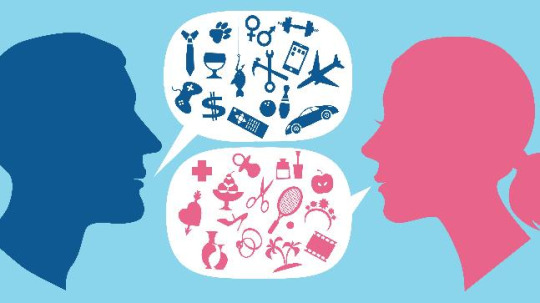
Coffman then conducted a series of experiments. The first experiment had participants complete timed tests of cognitive ability in five domains: general science, arithmetic reasoning, mathematical knowledge, mechanical understanding and assembling objects. And at the end of the test participants were asked to guess their score. After guessing their own scores, the female participants predicted their scores to be 0.85 points lower than the males, but in fact their scores were the same. Even after the women were told their true scores, they still felt they were worse than the men in these subjects.
The second experiment was a comparison experiment in which Coffman divided the participants into two teams, one pair concealing the participants' true gender while the other pair made their true gender public, and the final results of the experiment showed that males and females were equally able to answer the questions, but in the group with the public gender, as the questions became more 'masculine', the females were significantly less motivated to answer the questions in the group as well as participation were significantly lower than for males, especially when there was only one female talking to a group of males. However, in the group where gender was unknown, no gender differences were found in the extent to which men and women talked about their ideas or were recognised by others for their opinions. In addition to this, during the final mutual rating session, male raters were also significantly less likely to believe that the speaker rated as 'excellent' was female. In this way, it can be seen that gender stereotypes can distort people's confidence in a particular area. In addition to this, Coffman also notes that "Stereotypes are pervasive, widely-held views that shape beliefs about our own and others' abilities, likely from a very young age."
So my photographs will take from different ages as a way of showing the gender stereotypes that a person will experience from a young age. For example, when girls were younger they were asked to play with Barbie dolls and wear pink. Boys, on the other hand, were asked to play with toys like model cars and wear blue. When they grow up girls mostly choose arts and boys mostly choose science ...... I will continue to research this information to ensure accuracy and objectivity.
1 note
·
View note